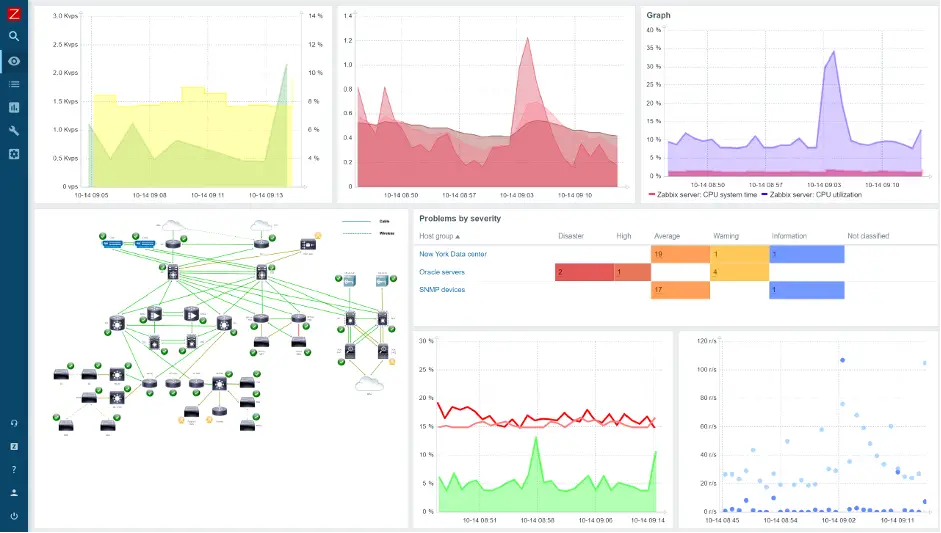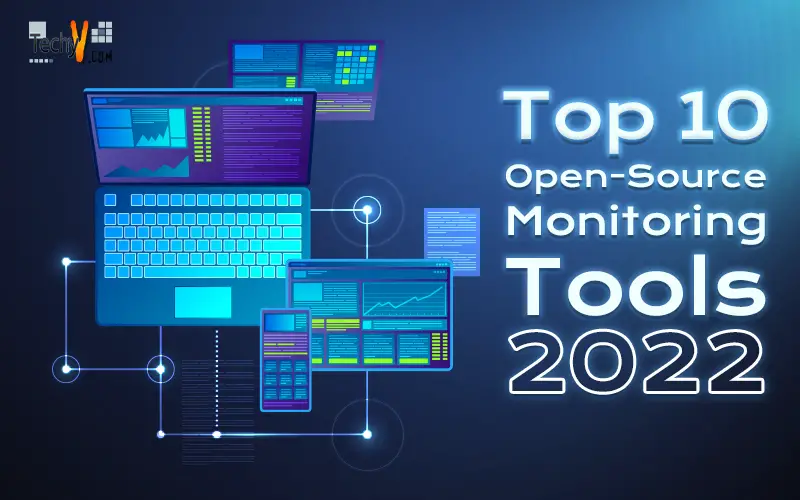First and foremost, the most crucial thing is to provide businesses with a standard against which to assess their productivity and discover strategies for improving the speed of their development and deployment cycles. Applications known as monitors are specialized programs that examine server traffic before creating reports on it. These programs make it simpler to understand data. These open-source monitors can also scan the entire server, checking each line of code and piece of data for flaws and making recommendations for how to solve them. Additionally, monitoring and observability are crucial to the success of the DevOps team. Here are the top ten open-source monitoring tools.
1. Nagios
Since its founding in 1999, Nagios has specialized in delivering monitoring solutions for infrastructure ranging from small businesses to large corporations. Nagios can monitor every type of component, including middleware, web servers, operating systems, applications, services, and network protocols. Nagios, powered by the Core 4 monitoring engine, uses fewer server resources while delivering high performance.

2. Prometheus
The Prom Query language is unique to this monitoring program. It is simple to understand, and after you finish, you can make your own set of alerting rules. Prometheus has several tools for filtering and providing math calculations that are sent as warnings. One item, though, should raise some red flags: to establish rules, you must first be familiar with the names of all the metrics. The client library requires some adjustments to work on your systems because it isn’t stable.

3. Zabbix
Zabbix is a tool for managing server information and producing secure analytics reports. It has improved features like several integrations to automate several chores that can help users save a ton of time. The superior deployment method used by this tool assures that code is deployed on the server and eliminates any risk of a crash.

4. Riemann
The open-source monitoring tool Riemann is perfect for distributed systems. It is an even processing system with low latency that can gather measurements from different distributed systems. With minimal latency, it can handle millions of transactions per second. For highly dispersed, scalable systems, it is an excellent monitoring tool.

5. Checkmk
A highly scalable tool called Checkmk can keep an eye on servers, networks, cloud resources, databases, containers, IoT, and more. It comes in two different modes: A high level of automation allows for extensive monitoring and minimizes manual configuration offering a fully scalable, distributed monitoring feature appropriate for monitoring environments.

6. Cacti
Cacti is one of the open-source network monitoring tools available for massive IT systems. It serves as a standardized software platform for creating graphs as a result. Its approach of working with data collecting and graphical display in many contexts contributes to its usability. Users will find it simpler to reprocess and reorganize the data to suit their needs. You must download this software’s programs and packages to get the most out of it. When deploying for large-scale businesses, this strategy may be advantageous.

7. Observium-
It is most effective at managing and monitoring traffic. Observium is a program that enables you to monitor server traffic and use API integration to improve the caliber of your work. The accounting systems used by this tool include class-based QoS measurements, IP SLA, and Pseudowire.

8. Pandora FMS
An open-source monitoring tool called Pandora FMS enables companies to keep tabs on their whole IT infrastructure. It has virtual interfaces, Windows and Unix servers, and network monitoring capabilities. Top-notch network features offered by Pandora FMS include SNMP support, ICMP polling, network latency monitoring, and system overload. Agents can also be placed on devices to monitor logfile events and conditions like device temperature and overheating.

9. Net Data
Net data offers unmatched real-time health monitoring and performance troubleshooting. The GitHub community has been crucial to Net data’s development over the past six years. Net data is built to function flawlessly across all platforms. Utilizing tens of thousands of data, interactive graphs, and perceptive health warnings, you can quickly identify slowdowns and irregularities in your infrastructure.

10. Graphite
Graphite is a monitoring software program developed with Python. Due to its use of the Django web app, it is one of the few monitoring programs that permits dashboard customization. Similar to how the built-in user interface didn’t hold up over time, users mostly rely on Grafana for the interface. Graphite has no specific plug-ins, but it is compatible with other programs. There is nothing wrong with this product, but inconsistent data acquisition is one of its weaknesses. The time it takes to retrieve data from various systems can occasionally exceed what is necessary.


















